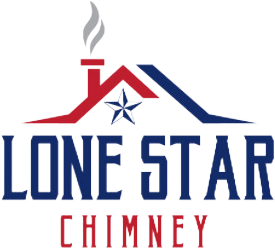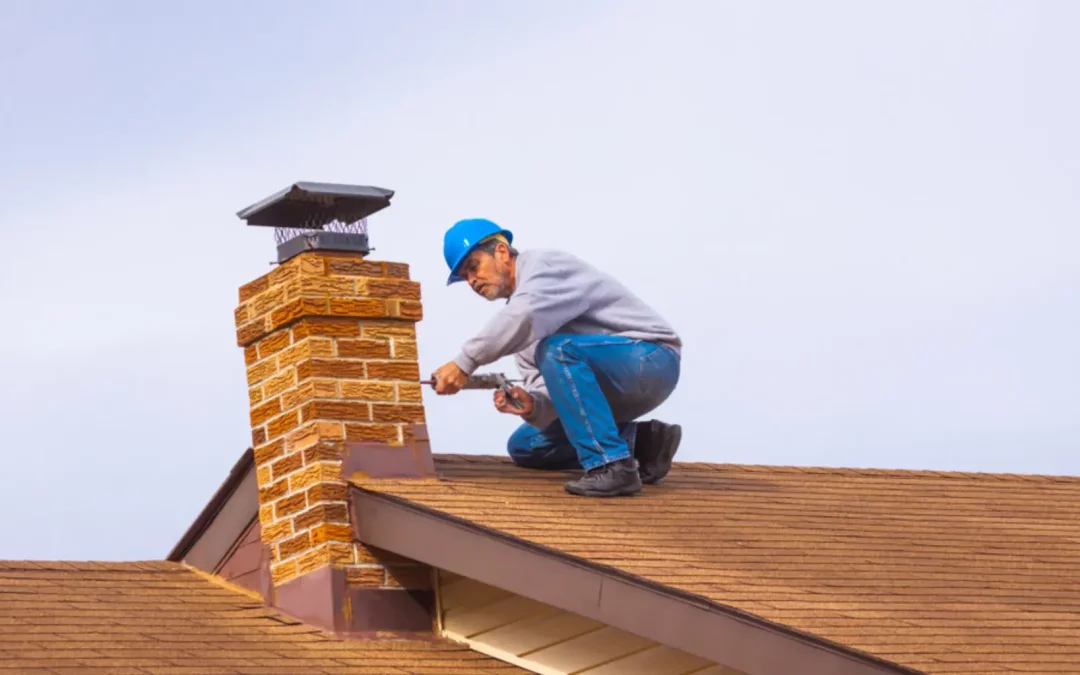Living in Houston doesn’t mean you can’t enjoy the cozy ambiance of a fireplace during those occasional cold snaps. Electric fireplaces have become increasingly popular among Houston homeowners, offering convenience and style without some of the maintenance demands of traditional wood-burning options. However, many homeowners don’t realize that proper chimney maintenance remains essential even with electric units, especially in Houston’s unique climate conditions.
Regular chimney inspection is crucial for ensuring the safety and efficiency of any fireplace system, including electric models. This comprehensive guide explores everything Houston homeowners need to know about electric fireplace safety and maintaining the structural integrity of their chimney systems.
The Importance of Chimney Maintenance for Electric Fireplace Systems
While electric fireplaces don’t produce actual flames or combustion byproducts like their wood-burning counterparts, they are often installed in existing fireplace structures that include chimneys. These chimney structures require regular attention regardless of the type of fireplace currently in use.
Many Houston homes feature converted fireplaces, where traditional wood-burning units have been replaced with electric inserts. The original chimney remains part of the home’s structure and ventilation system, making proper maintenance essential for several reasons:
- Structural Integrity: Houston’s humid climate and occasional severe weather can accelerate deterioration of chimney masonry and components.
- Preventing Water Damage: Without proper maintenance, chimneys can develop leaks that allow moisture to penetrate the home, causing damage to walls, ceilings, and the electric fireplace unit itself.
- Future Flexibility: Maintaining your chimney properly preserves the option to convert back to a traditional fireplace should you desire.
- Home Value: A well-maintained chimney enhances your home’s market value and curb appeal, even when paired with an electric fireplace.
- Safety Assurance: Even unused chimneys can develop structural issues that could potentially become safety hazards.
A professional chimney inspection can identify these issues before they develop into costly problems, ensuring your electric fireplace operates in a safe environment.
Common Chimney Issues Affecting Houston Homes
Houston’s unique climate presents specific challenges for chimney maintenance that differ from those in colder regions. The combination of high humidity, occasional freezing temperatures, and heavy rainfall creates conditions that can accelerate chimney deterioration if not properly addressed.
Moisture-Related Damage
The high humidity levels in Houston contribute significantly to chimney deterioration. Even with an electric fireplace that doesn’t produce combustion gases, moisture can still affect the chimney structure in several ways:
- Brick and Mortar Deterioration: The freeze-thaw cycles, though less frequent in Houston than northern climates, can still cause expansion and contraction that damages masonry over time.
- Efflorescence: White mineral deposits on brick surfaces indicate water intrusion, a common issue in Houston’s humid environment.
- Rusted Dampers and Metal Components: Metal parts within the chimney can corrode due to moisture exposure, compromising functionality.
- Mold and Mildew Growth: The warm, humid conditions in Houston provide the perfect environment for biological growth within unused chimneys.
Wildlife Intrusion
Houston’s diverse wildlife population can view an unused chimney as ideal real estate:
- Birds, squirrels, raccoons, and even bats may build nests in chimneys that aren’t regularly used or properly capped.
- These animals can bring parasites, debris, and even cause blockages that affect home ventilation.
- Removing wildlife requires specialized knowledge and sometimes permits, making prevention through proper chimney maintenance the better option.
Regular chimney inspection by qualified professionals can identify these issues early, preventing more extensive damage and costly repairs.
The Chimney Inspection Process Explained
A thorough chimney inspection provides crucial information about your chimney’s condition, even when paired with an electric fireplace. The National Fire Protection Association (NFPA) establishes standards for chimney inspections, categorizing them into three levels based on comprehensiveness.
Level 1 Inspection
This basic inspection is recommended annually for all chimneys and includes:
- Visual examination of readily accessible portions of the chimney exterior and interior
- Verification that the flue is not obstructed
- Basic assessment of the chimney structure and connections
- Checking for obvious signs of damage or deterioration
For Houston homeowners with electric fireplaces, a Level 1 chimney inspection is typically sufficient for routine maintenance, provided no significant changes have occurred to the system.
Level 2 Inspection
More comprehensive than Level 1, this inspection is recommended when:
- The home is being sold or transferred
- A significant change has occurred to the system (like converting from wood-burning to electric)
- After severe weather events common to the Houston area
- When a Level 1 inspection reveals potential concerns
A Level 2 inspection includes everything in Level 1, plus:
- Inspection of accessible areas of attics, basements, and crawl spaces
- Evaluation of the chimney’s interior using specialized video scanning equipment
- Assessment of proper clearances from combustibles
Level 3 Inspection
The most comprehensive option, a Level 3 inspection includes everything in Levels 1 and 2, plus:
- Removal of certain components for complete examination
- Inspection of concealed areas of the chimney structure
- Evaluation of hidden portions of the flue and chimney system
This level is typically recommended only when serious hazards are suspected based on findings from Level 1 or Level 2 inspections.
During any chimney inspection with an electric fireplace installed, the professional should also:
- Verify proper installation of the electric unit
- Check electrical connections and wiring safety
- Ensure adequate ventilation if required by the specific model
- Assess whether the existing chimney structure properly accommodates the electric insert
How Electric Fireplaces Differ from Traditional Systems
Understanding the fundamental differences between electric fireplaces and traditional wood-burning or gas systems helps clarify why chimney maintenance remains important despite the change in heating technology.
Operation and Ventilation Requirements
Electric fireplaces produce heat through electrical resistance rather than combustion. This difference creates several important distinctions:
- No actual flame is produced, eliminating combustion gases like carbon monoxide
- No fuel is burned, so no ash, creosote, or other byproducts accumulate
- Ventilation requirements differ significantly from traditional fireplaces
- Most electric units don’t require the chimney for ventilation purposes
Despite these differences, the chimney structure remains part of your home and requires maintenance to prevent structural issues.
Installation Considerations
Electric fireplaces are typically installed in one of three ways, each with different implications for chimney maintenance:
- Insert Installation: The electric unit is inserted into an existing fireplace opening, with the original chimney structure remaining intact but unused for ventilation.
- Built-In Installation: The electric fireplace is incorporated into a wall, sometimes utilizing portions of an existing chimney structure for aesthetic purposes.
- Freestanding Installation: These units aren’t connected to any chimney structure but may be positioned near an existing fireplace for aesthetic reasons.
For insert and some built-in installations, chimney inspection remains important because the structure, though not functionally necessary for the electric fireplace, is still part of your home’s construction.
Safety Advantages
Electric fireplaces offer several safety advantages compared to traditional systems:
- No risk of chimney fires from creosote buildup
- No carbon monoxide production
- No open flame that could ignite nearby combustibles
- Automatic shut-off features in most modern units
- Cooler external surfaces, reducing burn risks
These benefits make electric fireplaces particularly appealing in Houston’s mild climate, where fireplaces are often used more for ambiance than primary heating.
Seasonal Chimney Maintenance Tips for Houston Homeowners
Houston’s distinctive seasonal patterns require a tailored approach to chimney maintenance. Following this seasonal guide can help maintain your chimney system throughout the year, even when paired with an electric fireplace.
Spring Maintenance (March-May)
Spring is an ideal time for comprehensive chimney inspection in Houston, as it follows the limited winter use period and precedes the rainy season:
- Schedule a professional chimney inspection to assess any damage that may have occurred during winter
- Check for water damage following spring rains
- Inspect chimney caps and crowns for damage that could allow water intrusion
- Clear debris that may have accumulated during winter storms
- Address any wildlife removal needs before breeding season progresses
Summer Maintenance (June-August)
Houston’s hot, humid summers create specific maintenance needs:
- Monitor for moisture issues during the humid summer months
- Check for biological growth (mold, algae) that thrives in warm, moist conditions
- Ensure chimney caps remain secure before hurricane season intensifies
- Consider waterproofing treatments to protect masonry from summer thunderstorms
- Address any exterior masonry repairs during dry periods
Fall Preparation (September-November)
Before the occasional use season begins:
- Schedule another chimney inspection if the last one was over a year ago
- Clear any debris from hurricane season
- Check that the electric fireplace components are clean and functioning properly
- Verify that chimney dampers operate correctly if still in place
- Ensure that water drainage systems around the chimney base function properly
Winter Vigilance (December-February)
During Houston’s mild winter when electric fireplaces might see more use:
- Monitor for any unusual operation of the electric fireplace
- Check for water intrusion following rare freeze events
- Ensure proper electrical connections remain secure
- Keep combustible decorations away from electric fireplace units
- Follow manufacturer’s guidelines for continuous operation during cold snaps
While some basic maintenance can be handled by homeowners, a professional chimney inspection remains the most reliable way to identify and address potential issues before they escalate into serious problems.
The Value of Professional Chimney Inspection for Electric Fireplace Safety
Even with the simplified maintenance requirements of electric fireplaces, professional chimney inspection offers substantial benefits that DIY assessment cannot match. Qualified chimney professionals bring specialized knowledge, equipment, and experience that allows them to identify subtle warning signs before they develop into major issues.
Specialized Equipment
Professional chimney inspectors utilize tools designed specifically for thorough evaluation:
- Video scanning equipment to visualize the entire interior chimney surface
- Moisture meters to detect water intrusion not visible to the naked eye
- Thermal imaging cameras to identify temperature anomalies indicating structural issues
- Specialized measuring devices to verify proper clearances and dimensions
These tools allow for comprehensive assessment that goes far beyond what visual inspection alone can accomplish.
Expert Knowledge
Certified chimney professionals understand:
- Local building codes specific to Houston and surrounding areas
- How Houston’s climate uniquely affects chimney structures
- Early warning signs of deterioration that might be overlooked by untrained observers
- Proper remediation techniques for common issues
- Safety requirements for various fireplace systems, including electric units
This expertise enables them to provide tailored recommendations based on the specific conditions of your home and chimney system.
Long-Term Cost Savings
While professional chimney inspection carries an upfront cost, it typically results in significant long-term savings:
- Early identification of issues prevents more extensive damage
- Proper maintenance extends the lifespan of both the chimney structure and electric fireplace
- Professional documentation of chimney condition can be valuable for insurance purposes
- Expert advice helps homeowners prioritize necessary repairs and avoid unnecessary work
For Houston homeowners, regular professional chimney inspection represents a prudent investment in home safety and maintenance, particularly given the area’s climate challenges.
Choosing a Qualified Chimney Inspector in Houston
Not all chimney service providers offer the same level of expertise and professionalism. When selecting a chimney inspector in Houston, consider these important factors:
Certification and Training
Look for inspectors with recognized industry credentials:
- Certification from the Chimney Safety Institute of America (CSIA)
- National Fireplace Institute (NFI) certification
- Membership in professional organizations like the National Chimney Sweep Guild
- Familiarity with NFPA 211 standards for chimney inspections
These credentials indicate a commitment to professional standards and ongoing education.
Local Experience
Prioritize companies with:
- Established history serving the Houston area
- Understanding of local building codes and regulations
- Familiarity with common issues affecting chimneys in Houston’s climate
- Knowledge of local materials and construction techniques
Comprehensive Services
The most valuable chimney inspectors offer:
- All three levels of inspection according to NFPA standards
- Written reports with detailed findings and recommendations
- Photo or video documentation of chimney conditions
- Clear explanation of identified issues and proposed solutions
- Follow-up services for any necessary repairs
Insurance and Licensing
Verify that any chimney inspector you hire:
- Carries appropriate liability insurance
- Maintains workers’ compensation coverage for employees
- Holds required local business licenses
- Provides written estimates before beginning work
By selecting a qualified professional for your chimney inspection, you ensure accurate assessment and appropriate recommendations for maintaining both your chimney system and electric fireplace.
DIY Maintenance Between Professional Chimney Inspections
While professional chimney inspection forms the cornerstone of proper maintenance, Houston homeowners can perform several important tasks between professional visits to maintain their chimney systems and electric fireplaces:
Regular Visual Checks
Perform basic visual inspections:
- Examine the exterior masonry for obvious cracks, missing mortar, or deterioration
- Check the chimney crown for visible damage
- Verify that the chimney cap remains secure, particularly after storms
- Look for water stains on walls or ceilings near the chimney structure
- Inspect the fireplace surround for any signs of moisture or damage
Electric Fireplace Maintenance
For the electric unit itself:
- Dust regularly according to manufacturer recommendations
- Check that air intakes and outlets remain unobstructed
- Inspect power cords for damage or wear
- Test any included carbon monoxide or smoke detectors regularly
- Follow manufacturer’s cleaning guidelines for glass and decorative elements
Moisture Control
In Houston’s humid environment:
- Ensure proper roof flashing around the chimney remains intact
- Check that chimney cricket (saddle) properly diverts water on pitched roofs
- Verify that chimney caps adequately prevent water entry
- Consider appropriate waterproofing treatments for exterior masonry
- Address any moisture issues immediately to prevent more extensive damage
Seasonal Awareness
Adapt maintenance based on Houston’s seasonal patterns:
- Be especially vigilant for water intrusion during hurricane season
- Check for debris accumulation after storms
- Monitor for unusual sounds that might indicate wildlife entry
- Be alert for musty odors that could signal moisture problems
These homeowner maintenance practices complement professional chimney inspection rather than replacing it. When issues are identified, consult with a qualified professional rather than attempting complex repairs independently.
Electric Fireplace Selection Considerations for Houston Homes
For Houston homeowners considering installing a new electric fireplace or replacing an existing unit, several factors should influence your selection to ensure safety, efficiency, and compatibility with your home’s existing chimney structure:
Size and Fit
Proper sizing is crucial for both safety and aesthetics:
- Measure your existing fireplace opening accurately if installing an insert
- Consider clearance requirements for built-in units
- Verify weight capacity of supporting structures
- Ensure adequate space for ventilation according to manufacturer specifications
Heating Capacity
Match the unit’s heating capacity to your specific needs:
- Most Houston homes benefit from units with adjustable output
- Consider square footage ratings when selecting heating capacity
- Evaluate supplemental heating needs during occasional cold snaps
- Balance heating capacity with energy efficiency
Safety Features
Prioritize units with robust safety features:
- Automatic shut-off protection if the unit overheats
- Tempered glass for fronts and viewing areas
- Cool-touch exteriors, especially important in homes with children or pets
- ETL, UL, or CSA safety certifications
- Tip-over protection for freestanding models
Installation Requirements
Consider the installation process before purchasing:
- Determine if professional installation is required or recommended
- Verify electrical requirements (dedicated circuit, voltage, amperage)
- Assess compatibility with existing chimney structures if relevant
- Understand any permits required for installation in Houston
Energy Efficiency
In Houston’s climate, energy efficiency matters:
- Look for adjustable thermostats for precise temperature control
- Consider zone heating capabilities to reduce overall energy costs
- Evaluate LED lighting lifespan and energy consumption
- Compare operational costs across different models
By carefully considering these factors, Houston homeowners can select an electric fireplace that provides the desired ambiance and supplemental heating while maintaining compatibility with existing chimney structures and prioritizing safety.
The Future of Fireplace Safety: Smart Technology Integration
As technology evolves, electric fireplaces and chimney safety systems continue to advance. Houston homeowners should be aware of emerging trends that enhance both convenience and safety:
Smart Electric Fireplaces
The latest generation of electric fireplaces incorporates smart home integration:
- Wi-Fi connectivity for remote operation via smartphone apps
- Voice control compatibility with systems like Alexa, Google Assistant, and Siri
- Programmable schedules for operation and heating levels
- Integration with home automation systems
- Real-time energy consumption monitoring
Advanced Safety Features
Newer models often include enhanced safety technology:
- Heat sensors that adjust output based on room temperature
- Motion detectors that can automatically turn units off when rooms are unoccupied
- Child-safety lock features accessible through apps
- System diagnostics that alert homeowners to potential issues
- Battery backup functionality during power outages
Environmental Monitoring
Some systems now incorporate broader environmental awareness:
- Humidity sensors that can help identify moisture issues affecting chimney structures
- Air quality monitoring capabilities
- Weather-responsive programming that adjusts based on outdoor conditions
- Seasonal operation modes optimized for Houston’s climate patterns
Preventative Maintenance Alerts
Smart systems may include:
- Automatic reminders for professional chimney inspection
- Usage tracking to optimize maintenance schedules
- Performance analytics that identify potential issues before failure
- Direct connection to service providers for streamlined maintenance
While these technological advances offer exciting possibilities, they complement rather than replace fundamental safety practices, including regular professional chimney inspection and appropriate maintenance of both electric fireplaces and chimney structures.
Houston homeowners who embrace both traditional maintenance wisdom and emerging technology position themselves to enjoy the ambiance and convenience of electric fireplaces while maintaining the structural integrity and safety of their homes for years to come.
Regular chimney inspection remains essential regardless of fireplace type, protecting your investment and ensuring your home remains safe and beautiful through Houston’s distinctive seasons. By understanding the unique considerations of electric fireplace operation and chimney maintenance in Houston’s climate, homeowners can enjoy the best of both worlds—modern convenience with traditional home protection.
Read more:


